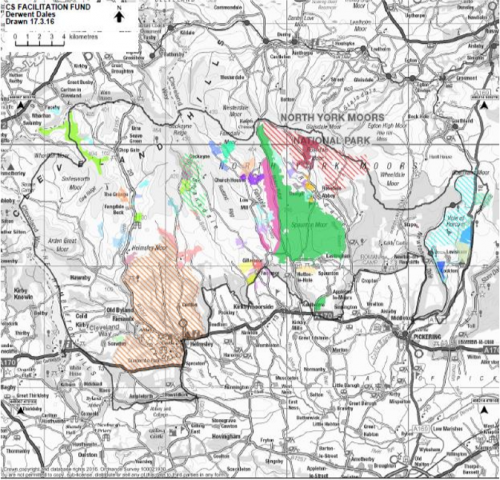Ref: CSFF030004
Lead: Karen Stanley, karen.stanley@farmingandwildlife.net
Group members: 36
Length of agreement: 5
Area of group (Hectares) 13,913
- Restoring upland habitats to provide benefits for priority species (waders), flood risk management within the River Rye and Seph catchments, soil erosion, carbon storage, historic features, water quality, biodiversity and drinking water resources
- Restoring priority habitats and implementing soil and water options within the Rye and Derwent river catchments, in locations where this will enhance the riparian habitat and reduce soil erosion to benefit biodiversity, water quality and flood risk management
- Enhancing and expanding the area of priority habitats within the Pickering Beck, Newtondale, Upper Derwent and Crosscliff Beck catchments, to create an interconnected network of species-rich grassland, wet woodland and ancient woodland to benefit a range of pollinating insects, historic features, landscape character, water quality and flood risk management
- Enhancing and expanding the area of species-rich grassland along the southern fringes of the North York Moors, where this will connect existing patches of priority habitat and provide benefits for priority species, wild pollinators, historic features, landscape character, water quality and flood risk management
- Enhancing existing woodlands and expanding woodland cover to benefit landscape character, biodiversity, water quality and flood risk as well as wider climate change, economic and social benefits around Helmsley, the Derwent, Pickering Beck and Sinnington catchments
- Reduce nitrates in Upper, middle and Lower Derwent catchments
- Reduce phosphates in Rye catchment
- Reduce sediment in Rye and Upper Derwent catchments

